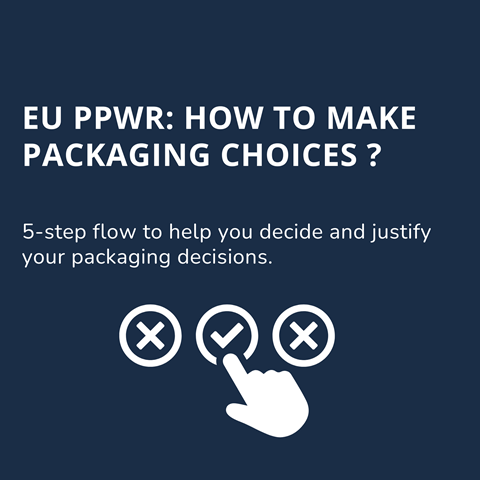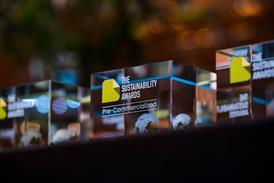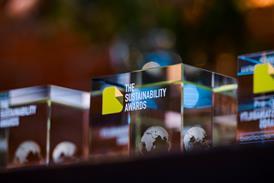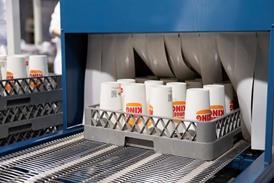
In light of the EU’s new Packaging and Packaging Waste Regulation, every pack must somehow protect the product, please consumers, and meet stringent sustainability guidelines – all at the same time. Anna Perlina, sustainable packaging consultant at Integrity Solutions, has developed a five-step, data-driven flow that aims to turn this daunting task into a clear decision path.
If you are placing packaging on the EU market, whether you are based in the EU or importing to the EU, you are now faced with the EU Packaging and Packaging Waste Regulation (PPWR).
In this context, and given the pressure that PPWR puts on the packaging value chain, you’re probably wondering which packaging options are available for your product category, and more importantly, how to choose the best one.
The “best” doesn’t only mean ticking regulatory boxes. It also has to make sense from environmental, practical, and business standpoints, as well as be accepted by the end consumer.
Under this pressure and with limited resources for all these explorations, screening and comparing packaging choices might seem overwhelming.
However, a structured approach can be applied to help you assess a variety of available options, narrow them down, and make informed, fact-based decisions.
So, if your company is currently at that decision point, here’s a 5-step flow to help you evaluate and choose between different packaging options:
1. Identify your packaging options
Start broad.
Don’t limit yourself to your current packaging setup; be open and unconstrained. What types of packaging are technically feasible for your type of product?
Think of all possible materials (glass, paper/cardboard, metal, plastic, etc.) and all packaging formats (bottles, boxes, jars, pouches, wraps, etc.).
Also, include alternatives like reusable, refillable, biodegradable, and compostable options.
At this stage, you’re creating an inventory of possibilities, not making a decision yet.
2. Evaluate functional requirements
Once you’ve mapped out your options, start applying some practical filters.
Review each option to check whether it:
- Adequately protects the product
- Maintains the required shelf life
- Meets your logistical and distribution needs
- Aligns with consumer expectations and usability
This step helps you eliminate the options that won’t work in real-world use.
It’s important to remember that the primary role of packaging is to protect the product. Any effort to improve packaging sustainability becomes irrelevant if the product inside gets damaged or spoiled, as that would only increase waste.
3. Assess according to EU PPWR criteria
With the functional options left, you can now look through the PPWR lens.
Start mapping each packaging type against PPWR compliance points:
- Is the packaging recyclable by EU standards?
- Does it meet reuse or refill targets where applicable?
- If it’s plastic, does it meet the recycled content thresholds?
- Is the packaging optimized for minimal material usage?
You’ll likely be able to further narrow your list here.
Any packaging option that doesn’t align with these core requirements simply won’t be allowed on the EU market in the future.
4. Consider life-cycle impacts
If you still have multiple viable options that differ significantly in material or design, this is the time to bring in a Life Cycle Assessment (LCA).
LCA helps you compare environmental impacts across the full lifecycle, from raw material extraction to manufacturing, transportation, consumer use, and end-of-life (disposal, recycling, composting, etc.).
The LCA allows you to assess which packaging has the lowest overall environmental footprint.
So, when feasible, prioritize packaging choices that demonstrate significant improvements in environmental metrics compared to others.
5. Assess Implementation Feasibility
Now that you’ve made it through the regulatory and environmental filters, the final step is to consider the feasibility of scaling for the remaining options.
Even the most compliant and sustainable packaging won’t work if its implementation doesn’t make business sense.
Questions to ask:
- What are the operational requirements for each option?
- Does it require machinery changes, retooling, or supplier shifts?
- What is the feedstock and how accessible is it?
- What are the total costs in terms of materials, investments, logistics, EPR fees, plastic taxes, and compliance certifications?
Feasibility is about what you can maintain over time.
The final packaging choice needs to be executable and economically sustainable for your business.
You might want to argue that this fifth step, assessing the feasibility of packaging options, should be the first one to filter the rest of the flow.
It would be if we looked at this exercise from a business perspective.
However, our objective is to ensure that we have all the answers when we are asked by stakeholders and consumers why and how our packaging choices were made and what priority has been given to the sustainability aspects.
All the data and insights collected during this selection process will not only guide your decision-making but also serve as proof points for your stakeholders, consumers, and the authorities.
Whether you need to demonstrate compliance, explain your environmental performance, or support marketing claims, this groundwork will make everything easier down the line.
Let your packaging decisions be informed and data-driven, not based on what looked cool on LinkedIn or what your current supplier happens to have on offer.
If you liked this story, you might also enjoy:
The ultimate guide to the Packaging and Packaging Waste Regulation in 2025
How are the top brands progressing on packaging sustainability?
Everything you need to know about global packaging sustainability regulation in 2025
The key to increasing the use of reusable packaging in supermarkets




















No comments yet